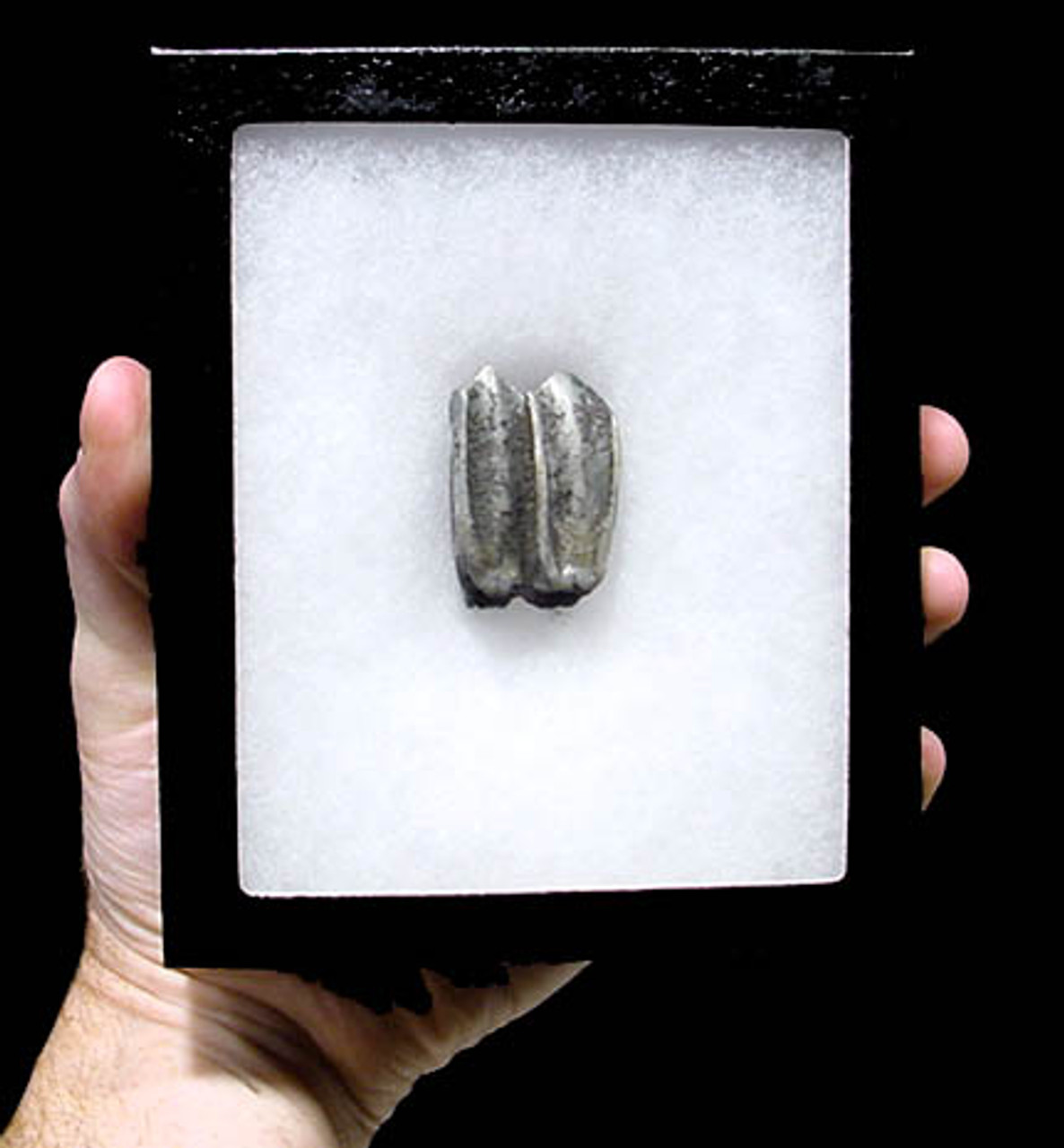Product Description
ITEM #
|
LM46-004
|
||
ID
|
Hemiauchenia
|
||
FOUND
|
Aucilla River - Florida, U.S.A.
|
||
AGE
|
PLEISTOCENE: 1.4 million - 10,000 years ago
|
||
SIZE
|
1.75" long
|
||
CONDITION
|
NO REPAIR OR RESTORATION
|
||
NOTE
|
LARGE PERFECT TOOTH FROM A PREHISTORIC
|
||
INCLUDES DISPLAY BOX - Actual Item - One Only
Comes with a certificate of authenticity / information sheet |
|||
From the depths of the famous Aucilla River comes the finest fossil molar specimen from a prehistoric llama that once thrived in Florida, Hemiauchenia. This is an upper jaw molar. This fossil molar is not only an exceptionally large example but it features the finest possible preservation. The specimen is exactly as found and still has river deposits on areas of its choice enamel. All enamel is present and is a very unique color ranging from dark blue to baby blue! Completely intact with a well-preserved chewing surface. Not only is this a rare and unique North American land mammal specimen, it is wonderfully aesthetic. NO REPAIR and NO RESTORATION.
The Hemiauchenia species in Florida consisted of several types of llamas. Dating back to the Miocene Period 9 million years ago, some of these species were as tall as a modern camel with other species being about the size of a modern llama. All were of a lighter build than modern comparisons. Hemiauchenia teeth are of a hypsodont design, meaning the crown is very tall and in many cases, exceeds the height of the roots. The cheek teeth of Hemiauchenia are very angular with sharp, dramatic crescents. The Hemiauchenia along with all other members of the Camelidae family survived in Florida all the way to the end of the Pleistocene. Today, they are survived only by species living in the high plains of South America and in parts of Paraguay.
Florida's history of terrestrial vertebrates is extremely important to our fossil record. Without the knowledge gained from these fossils, the history of Cenozoic terrestrial life on the North American continent would be very incomplete.
 US DOLLAR
US DOLLAR
 EURO
EURO
 AUSTRALIAN DOLLAR
AUSTRALIAN DOLLAR
 CANADIAN DOLLAR
CANADIAN DOLLAR
 POUND STERLING
POUND STERLING










